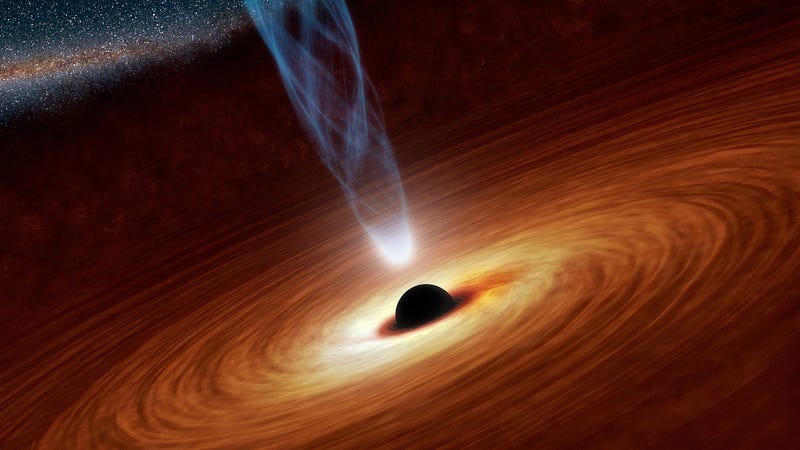A chilling prophecy: The heat death of the universe
By Annabelle Mathers, Civil Engineering, 2022

There are many theories on how the universe could end, with none of the scenarios being particularly warm and fuzzy. To construct those theories, experts tentatively apply the laws of physics to predict the behavior of objects and entities across the unimaginable expanses of space. In particular, the controversial prediction of universal Heat Death relies primarily on the second law of thermodynamics, which some experts believe will result in the eventual conversion of all life and matter — all of existence — into heat energy.
The main focus of the second law is entropy, or the measure of disorder in a physical system. In short, the law states that the total entropy within a closed system must always increase to some irreversible extent. Systems always seek to be in a more disordered state, therefore the total entropy of the universe displays continual, positive growth. In terms of energy, heat energy is more disordered than the mechanical energy involved in performing the work that produces the heat. Thus, the outcome of energy distribution in a system involving work always favors heat; there will always be more resultant heat energy than can be converted back into mechanical energy. Little by little, all working processes and forms of energy are being irreversibly converted to a more disordered state in the form of heat, all thanks to this systematic tendency toward increased entropy.
Whether or not the temperature of the universe will reach absolute zero, or simply a lower overall temperature than the current range of temperatures, is unknown, but the idea of universal cooling remains constant.
Such death by heat means that the universe may eventually contain no free, usable energy for thermodynamic processes or work. In other words, all energy may become heat energy in a universe going toward thermal equilibrium. By definition, heat is the transfer of energy, which requires areas or objects with different energy values. Without a transfer of energy, thermal equilibrium will eventually result in a loss of heat, further reducing the capability for thermodynamic activities that facilitate the existence of most biological life and matter. In achieving maximum entropy, the universe cannot perform any more work, nor physical processes requiring energy transfer. Ironically, equilibrium means the overall temperature of the universe asymptotically approaches a temperature around absolute zero, giving the Heat Death its second name, the Big Freeze. Whether or not the temperature of the universe will reach absolute zero, or simply a lower overall temperature than the current range of temperatures, is unknown, but the idea of universal cooling remains constant.
These phenomena rely on the theory that the universe expands and grows infinitely over time. However, the amount of entropy in the universe does not directly depend on this expansion. Instead, the expanding nature of the universe means the universe may not collapse prematurely into itself because of gravitational attraction, thereby providing enough time for the relatively slow conversion of all energy into heat energy. Within this period of time, stars may fade, black holes rise to prominence and then all disappear, and atoms decay, leaving nothing but a vacuum with some vastly separated photons and electrons.
Different theories regarding the end of the universe and known life exist in the form of the Big Crunch, Big Rip, and Big Change, among others.
It must be noted, some scientists refuse to assume that the very laws of physics that supposedly enable Heat Death apply unquestionably to the entire universe, especially with the amount of unknown and physically-befuddling aspects of deep space. Whether or not the universe can be considered a closed thermodynamic system, and how exactly the work done by gravitational systems affects entropy, remains questionable. Furthermore, different theories regarding the end of the universe and known life exist in the form of the Big Crunch, Big Rip, and Big Change, among others.
One feature all of these scenarios have in common is that the timespan over which they occur, and therefore the time until the universe becomes a thermodynamic circus, is relatively immense. Star fuel may not be depleted for another 120 trillion years, a timespan dwarfed by the 100 duodecillion (1040) years until subatomic particles decay. Last, but certainly not least, the black holes may evaporate after 100 duotrigintillion (10100) years. Scientists realize that this generous amount of time leaves room for continued speculation, and unforeseen nuances in universal physics. For those on Earth heading into the winter season, however, it may be at least a little comforting to speculate that the universe is, in fact, increasing in heat energy for the time being.
Reviews of Modern Physics (1997). DOI: 10.1103/RevModPhys.69.337
International Journal of Engineering Technology, Management and Applied Sciences (2015). DOI: 10.13140/RG.2.1.4158.2485
